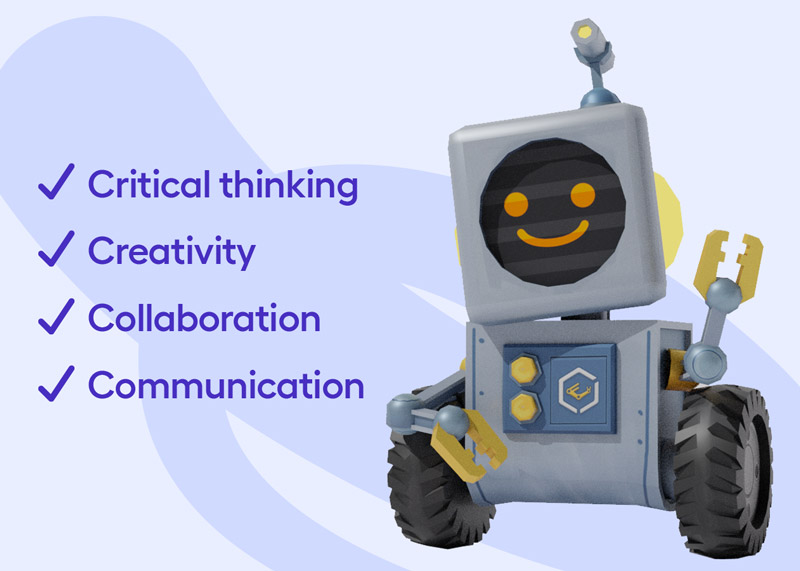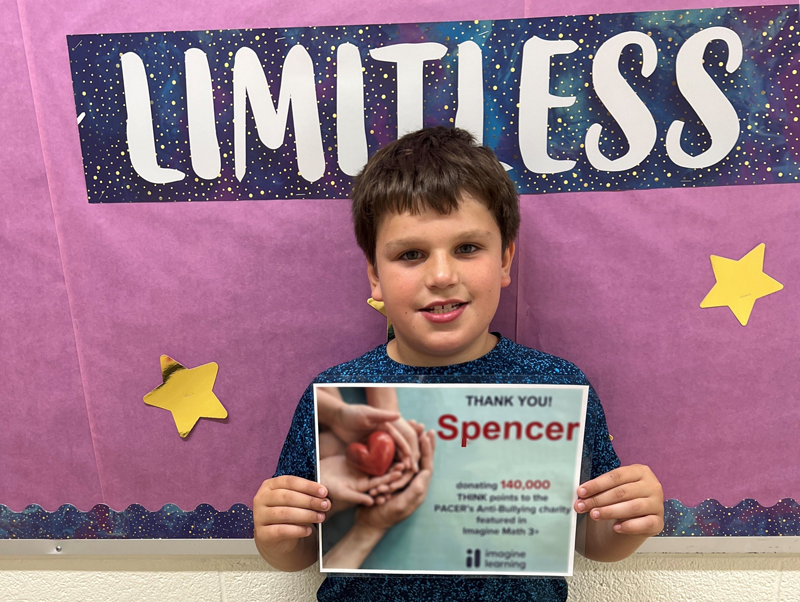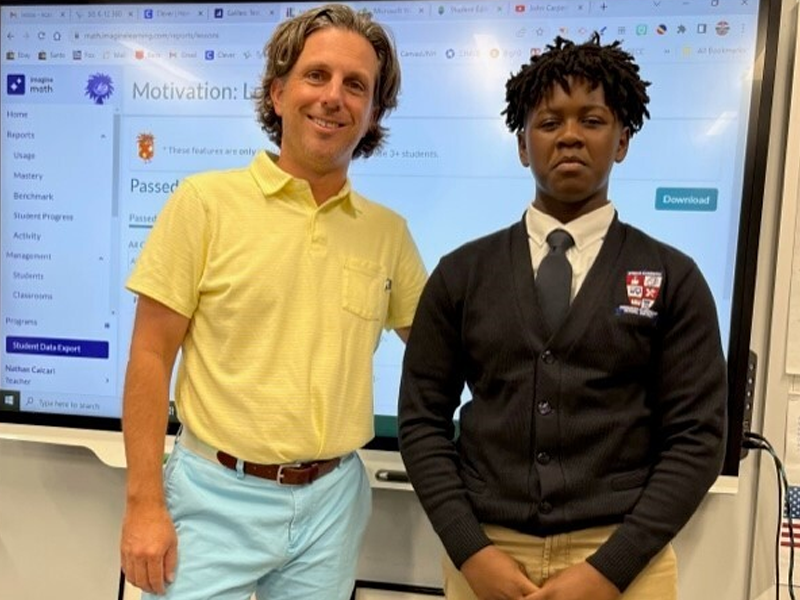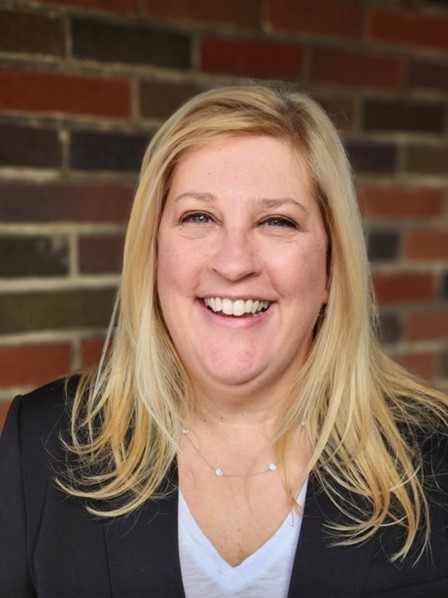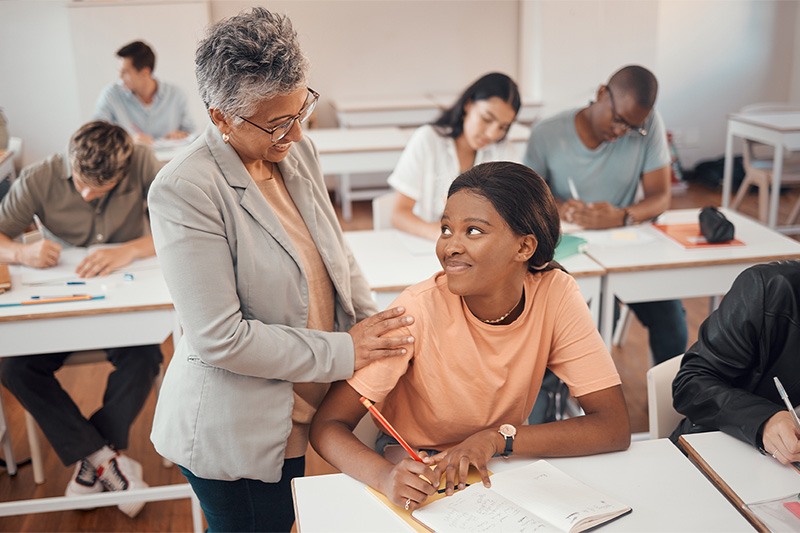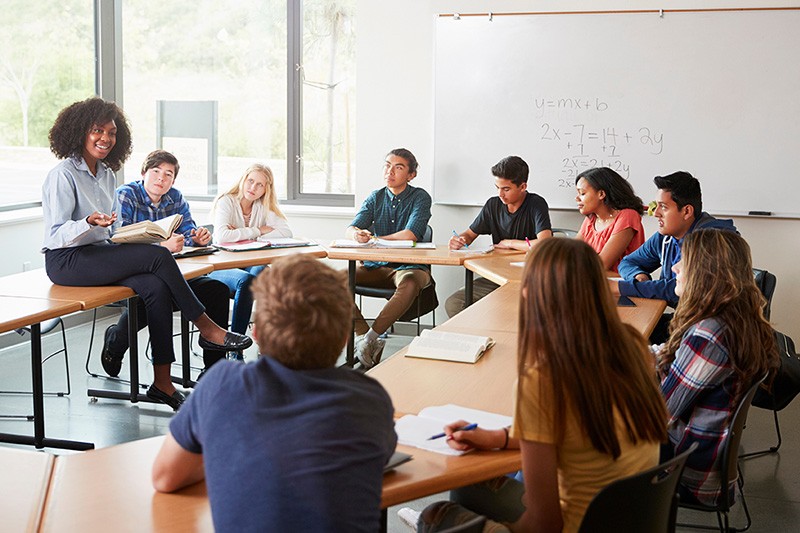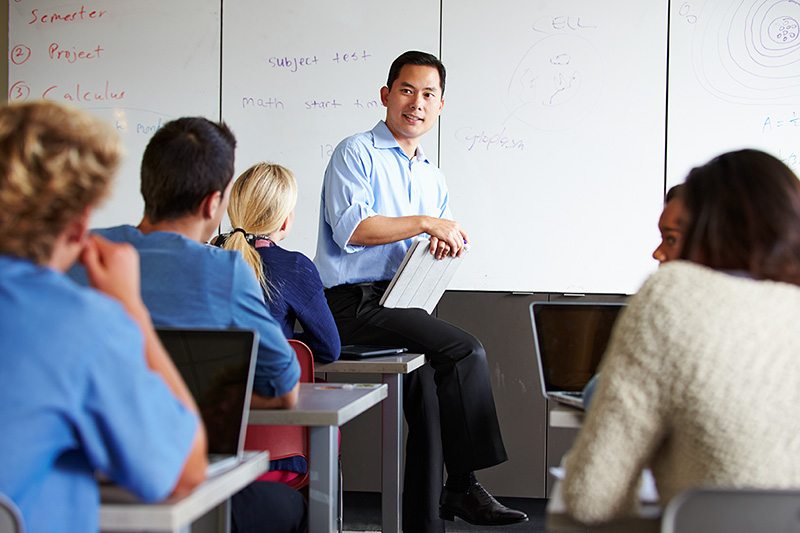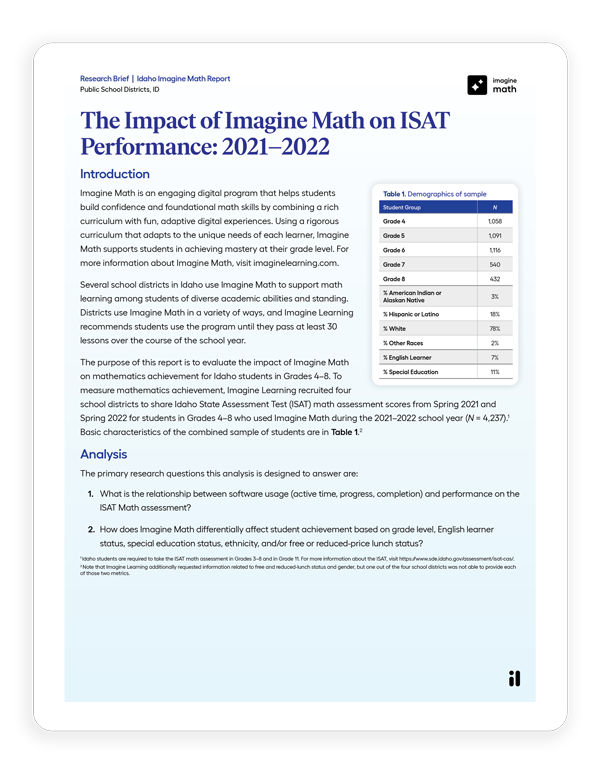Scottsdale, Arizona, December 5, 2023 – Imagine Learning, the largest provider of digital curriculum solutions in the U.S., received a Tier 2 Moderate rating from Evidence for ESSA for a research study assessing students using the Imagine Learning Illustrative Mathematics (IM) curriculum. The study was designed to meet the qualifications of Tier 2 Moderate evidence of effectiveness as defined by the Every Student Succeed Act (ESSA) and demonstrates the significant impact that Imagine Learning Illustrative Mathematics has on mathematics learning outcomes.
An independent research evaluator studied 3,000 students in 149 classrooms across 16 elementary schools in a Missouri school district that implemented the Imagine Learning Illustrative Mathematics program during the 2022–2023 school year. The Galileo Comprehensive Assessment System (GCAS) and Missouri Assessment Program (MAP) were used to measure student achievement.
Effective from initial use, this first-year implementation yielded impressive results and highlights the impact of Imagine Learning Illustrative Math on the MAP assessment (effect size = +0.38), receiving a “Moderate” rating according to Evidence for ESSA. Subgroup analysis also revealed that special education and Free or Reduced Lunch Program students using Imagine Learning Illustrative Math outperformed their peers following the traditional curriculum on the MAP mathematics assessment from spring 2022 to spring 2023.
When surveyed about their perception of Imagine Learning Illustrative Mathematics, one teacher who took part in the study stated, “The dynamics that come from the problem solving, inquiry model and discussion supports has opened math thinking up for all learners. Students are gaining entry points to the learning, questioning peers for clarity or understanding, and showing me things I never would have thought about before. Trust in the depth and the challenge…the students will rise to it!”
“The positive results we’re seeing in districts with Imagine Learning Illustrative Mathematics is now validated by an independent evaluator and the efficacy rating from Evidence for ESSA,” adds Dr. Nari Carter, Senior Director of Research at Imagine Learning. “We are excited about the student outcomes associated with this rigorous research that meets ESSA evidence standards.”
Imagine Learning Illustrative Mathematics has received multiple favorable certifications from third-party resources, including an all-green rating for the three tiers from EdReports, another highly regarded independent nonprofit that reviews K–12 curricula for standards alignment, quality, and usability.
Evidence for ESSA’s evaluation of submitted educational research is processed with rigorous review “to provide clear and authoritative information on programs that meet the ESSA evidence standards and enable educators and communities to select effective educational tools to improve student success.” Congress passed the Every Student Succeeds Act (ESSA) in 2015 as the federal law governing K–12 education. Within the bill are stipulations supporting the use of federal dollars on educational programs with evidence of effectiveness.
Imagine Learning prioritizes regular and rigorous research to ensure all Imagine Learning programs and services are built on the foundation of modern learning science principles and optimize student learning outcomes. Additional research will be conducted for Imagine Learning Illustrative Mathematics to further explore the factors that influence student success in the partner district in Missouri and in many more districts across the nation.
To read the full research study, click HERE.
About Imagine Learning
Every classroom, every student is bursting with potential. That’s why we pursue relentless innovation at the intersection of technology, people, and curricula. Imagine Learning creates K–12 digital-first solutions fueled by insights from educators, working alongside educators to support 15 million students in over half of the districts nationwide. Our core portfolio includes Twig Science®, Imagine Learning Illustrative Mathematics®, and Imagine Learning EL Education®. Our robust supplemental and intervention suite equips learners with personalized instruction for English and Spanish literacy, math, coding, and more. Imagine Edgenuity™ is our flagship courseware solution, complemented by Imagine School Services’ Certified Teachers. Imagine Learning. Empower potential.
Learn more: https://www.imaginelearning.com.
Preview the new Imagine IM program at https://www.imaginelearning.com/imagine-im/.
About Illustrative Mathematics
Illustrative Mathematics is a nonprofit organization dedicated to creating a world where all learners know, use, and enjoy mathematics. Imagine Learning is a premier digital partner of Illustrative Mathematics.
To learn more, visit https://illustrativemathematics.org/.


